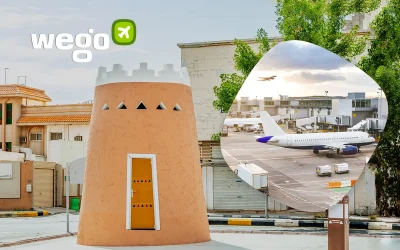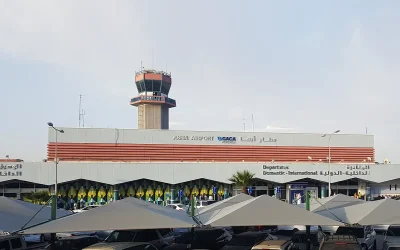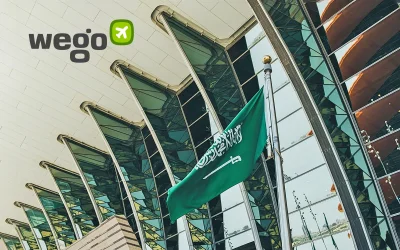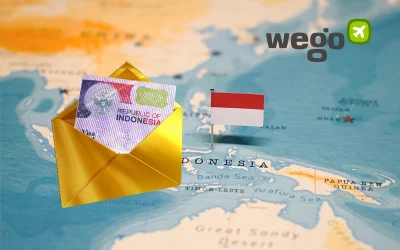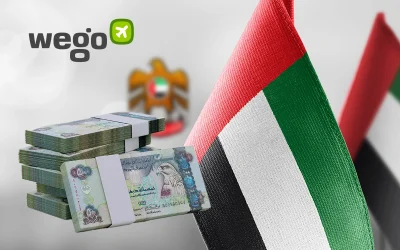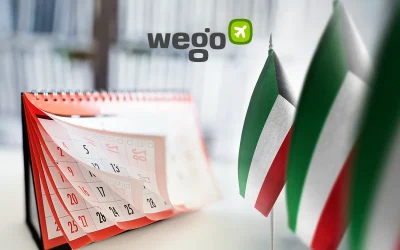Terminal 1 was constructed in 1981 to meet the growing demand for international passenger traffic in the Philippines during the 1970s. Designed by Leandro Locsin, a National Artist of the Philippines for Architecture, it surpassed its 4.5 million annual passenger capacity in 1991.
Subsequent enhancements have increased its capacity to accommodate up to 6 million passengers annually. Presently, the 16-gate terminal serves as the primary hub for all international flights arriving in Manila. Various airlines operate at Manila Airport Terminal 1, including:
- Air China (CA)
- Air Niugini (PX)
- Asiana Airlines (OZ)
- China Airlines (CI)
- China Eastern Airlines (MU)
- Eva Air (BR)
- Hong Kong Airlines (HX)
- Japan Airlines (JL)
- Korean Air (KE)
- Kuwait Airways (KU)
- Malaysia Airlines (MH)
- Oman Air (WY)
- Philippine Airlines (PR)
- Royal Air (RW)
- Royal Brunei Airlines (BI)
- Saudia Airlines (SV)
- Xiamen Air (MF)
- Zipair (ZG)
Terminal 2
To meet increasing air passenger demands, the Manila International Airport Authority (MIAA) constructed Terminal 2, which commenced operations in 1999. Initially designed for domestic flights, it now serves both domestic and international operations of Philippine Airlines. Designed by Aeroports de Paris, Terminal 2 features an arrowhead design with a central six-story Rotunda.
The terminal’s modern architecture includes white steel structures, aluminum ceilings, and marble floors. With North and South wings, Terminal 2 offers spacious lobbies for arrivals on the ground levels and departure areas on the second floor. Gardens and landscape patios throughout the terminal create a calming ambiance.
Domestic flights at NAIA Terminal 2 are operated by the following airlines:
- Philippines AirAsia (Z2)
- Philippine Airlines (PR) / PAL Express (2P)
- Royal Air (RW)
Terminal 3
In response to the escalating passenger traffic at Terminal 1, which reached its design capacity of 4.5 million passengers in 1991, plans were set in motion to construct a larger and modernized international passenger terminal. This led to the development of Terminal 3, currently the largest airport in Manila, occupying a 65-hectare property adjacent to the NAIA runway facilities.
With its two-tiered design, Terminal 3 efficiently handles arrivals on the ground floor and departures on the 3rd level. Boasting 600 meters of curbside space on each level, drop-offs and pickups are streamlined for passenger convenience.
Terminal 3 is equipped to handle 13 million international passengers annually, featuring a centralized headhouse for passenger processing, 20 boarding gates, and 140 check-in counters capable of accommodating 4,000 peak-hour one-way passengers.
Retail shops and food courts line the 4th level and arrival levels, while ample parking space for over 1,200 cars is available in front of the terminal, with an additional 2,500 car parking spaces in the multi-level parking area.
The following airlines operate at Manila Airport Terminal 3:
- Air Asia (Z2) / (AK)
- All Nippon Airways (NH)
- Cathay Pacific (CX)
- Cebu Pacific (5J)
- China Southern Airlines (CZ)
- Emirates (EK)
- Ethiopian Airlines (ET)
- Etihad Airways (EY)
- Gulf Air (GF)
- Hong Kong Express Airways (UO)
- Jeju Air (7C)
- Jetstar Asia Airways (3K)
- Jetstar Japan (GK)
- KLM Royal Dutch Airlines (KL)
- Qantas (QF)
- Qatar Airways (QR)
- Scoot (TR)
- Singapore Airlines (SQ)
- STARLUX Airlines (JX)
- Thai Airways (TG)
- Tiger Air (TR)
- Turkish Airlines (TK)
- United Airlines (UA)
Terminal 4
Terminal 4 caters to the operations of local carriers in Manila Airport. Designed to handle domestic flights, Terminal 4 serves as a hub for airlines such as AirSwift (T6), Cebgo (DG), and Sunlight (2R).
Despite its smaller size compared to other terminals at NAIA, Terminal 4 provides efficient services and facilities for domestic travelers, ensuring smooth and hassle-free journeys for passengers flying within the Philippines.
Transfer between terminals
MIAA provides complimentary shuttle services for seamless transfers between terminals at Ninoy Aquino International Airport (NAIA). Passengers can avail themselves of this convenient service by inquiring at the airport terminal’s transfer desk or visiting the airport’s website for more details.
The MIAA shuttle bus is exclusively for passengers with connecting flights to other NAIA terminals, and simply presenting your plane ticket grants access to this complimentary service. Operating 24/7, the inter-terminal transfer service departs every hour.
Shuttle bus locations are as follows:
- terminal 1: arrival curbside
- terminal 2: arrival curbside bay 19
- terminal 3 Pick-up: terminal transfer – arrival level
- terminal 3 Drop-off: departure curbside gate 1
- terminal 4: curbside (outer lane)
Manila International Airport lounges
Inside the Manila Airport, there are a variety of premium lounges that you can enjoy. Some of the lounges are listed below, according to some sources.
Marhaba Lounge
The Marhaba Lounge, located in Terminal 1 inside security, offers walk-in access for travelers. Priced from PHP 1,324 per traveler, guests can enjoy a maximum stay of 3 hours.
However, access to this lounge is free for some who have the following credit cards:
- BPI: Platinum Rewards Mastercard
- BDO: Diamond Rewards and Titanium Mastercard
- UnionBank: Platinum Mastercard Credit, Gold Visa Credit, Platinum Visa Credit, Miles+ Platinum Visa Credit, Cebu Pacific Platinum Visa Credit, Go Rewards Platinum Visa Credit, Corporate Visa Credit, Platinum Visa Debit
- Citibank: Emirates-Citibank Ultima Mastercard, Emirates-Citibank Ultimate, Emirates-Citibank World, Citi Prestige Credit Card, Citi PremierMiles Titanium, Citi Life World Elite
- RCBC: Platinum and Titanium RCBC Bankard, Black Card Platinum Mastercard, Diamond Card Platinum Mastercard, ZALORA Credit Card, JCB Platinum, UnionPay Diamond, World Mastercard, Visa Infinite, Visa Platinum
- Security Bank: Platinum and World Mastercard
- AUB: Platinum Mastercard
- Eastwest: Priority Visa Infinite
Moreover, the lounge provides complimentary amenities, including the following:
-
premium food
-
snacks
-
wifi
-
showers
-
flight Monitors
-
newspapers & magazines
-
TVs
-
Internet terminals
The Wings Transit Lounge
Located at the 4th Level of Terminal 3, The Wings Transit Lounge offers weary travelers a sanctuary to recharge and relax before immersing themselves in the vibrant city of Manila. Guests can indulge in much-needed rest after a long flight by providing executive lounge seats that transform into flat beds.
Furthermore, visitors can unwind with popular movies and pamper themselves with foot scrubs and spa treatments. Lounge seats are available for walk-in guests, subject to availability upon arrival. Priced at PHP 700 for up to 7 hours, guests can enjoy an unlimited finger food buffet, hot and cold drinks, access to luggage storage, and a WIFI connection during their stay at The Wings Transit Lounge.
PAGSS Premium Lounge
Another renowned airport lounge at NAIA is the PAGSS (Philippine Airport Ground Support Solutions, Inc.) Premium Lounge. This upscale lounge offers a variety of amenities to enhance the travel experience. Guests can enjoy a sumptuous food buffet and unlimited drinks while taking in panoramic views of the airport runway from the window bar table.
The lounge features cushioned seats, charging ports, and shower rooms for added comfort and convenience. Travelers can also utilize the luggage area to securely store their belongings while they relax and dine inside the lounge.
Access to the PAGSS Premium Lounge at Terminal 1 is free for selected credit cardholders:
- BPI: Visa Signature
- Citibank: Citi PremierMiles, Citi Platinum
- UnionBank: Gold Visa, Miles+ Platinum Visa, Cebu Pacific Platinum, Go Rewards Platinum
- RCBC: Visa Infinite, Mastercard Platinum (Black and Diamond), Visa Platinum, JCB Platinum, Hexagon Club, UnionPay Diamond, ZALORA Credit Card
- Security Bank: Platinum Mastercard, World Mastercard
- Metrobank: Travel Platinum Visa
- AUB: Platinum Mastercard
- China Bank: World and Wealth Mastercard
Philippine Airlines’ Mabuhay Lounge
Exclusive to Philippine Airlines’ Business Class passengers and select Mabuhay Miles members, including Million Milers, Premier Elite, and Elite members, access to the Mabuhay Lounge is complimentary.
This dedicated airport lounge offers a self-service buffet with the famous arroz caldo, cushioned seating with charging ports, a shower room, reading materials, flight update screens, and a runway view, ensuring a comfortable and enjoyable pre-flight experience for eligible guests.

[Total: 150 Average: 4.6]






